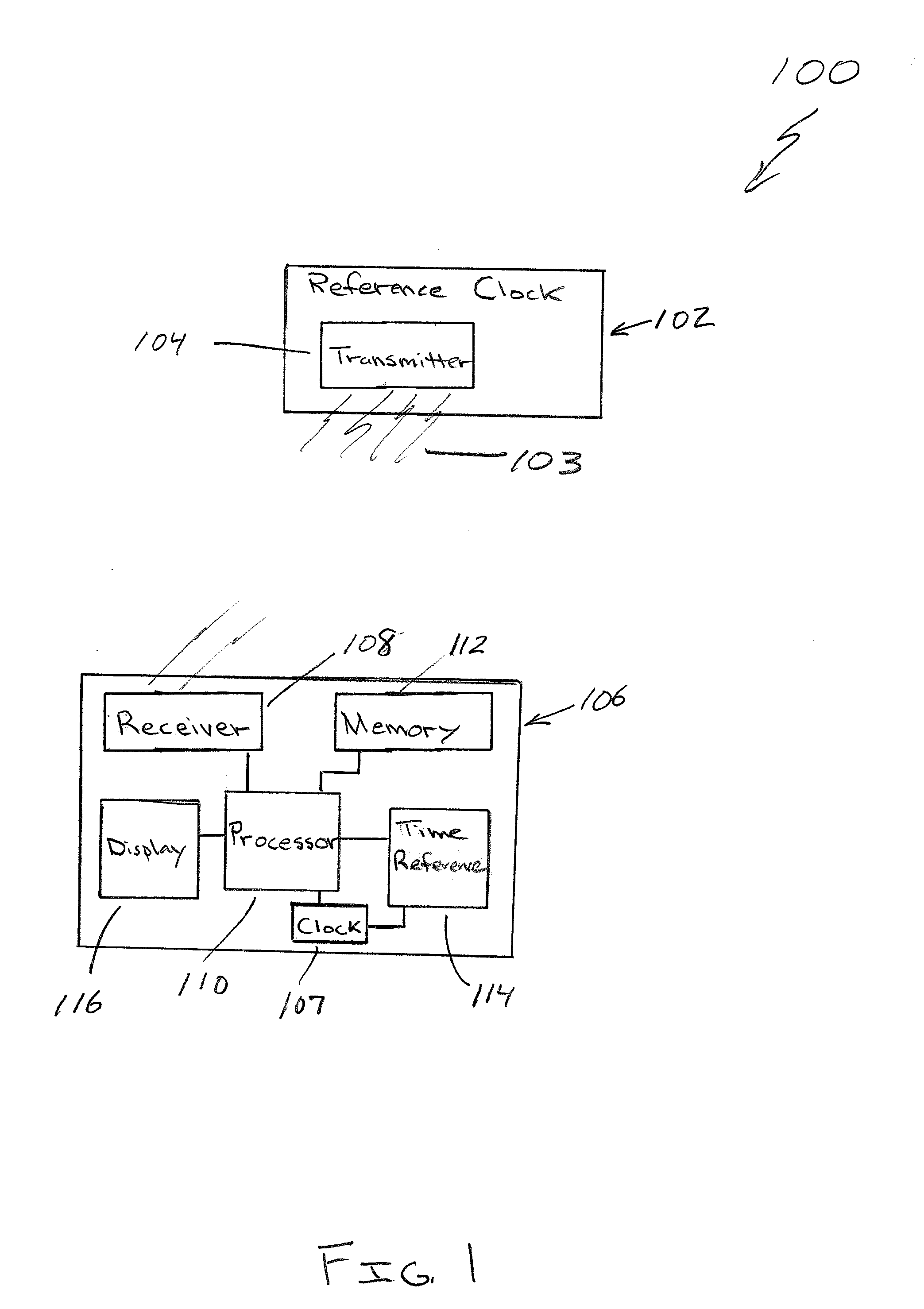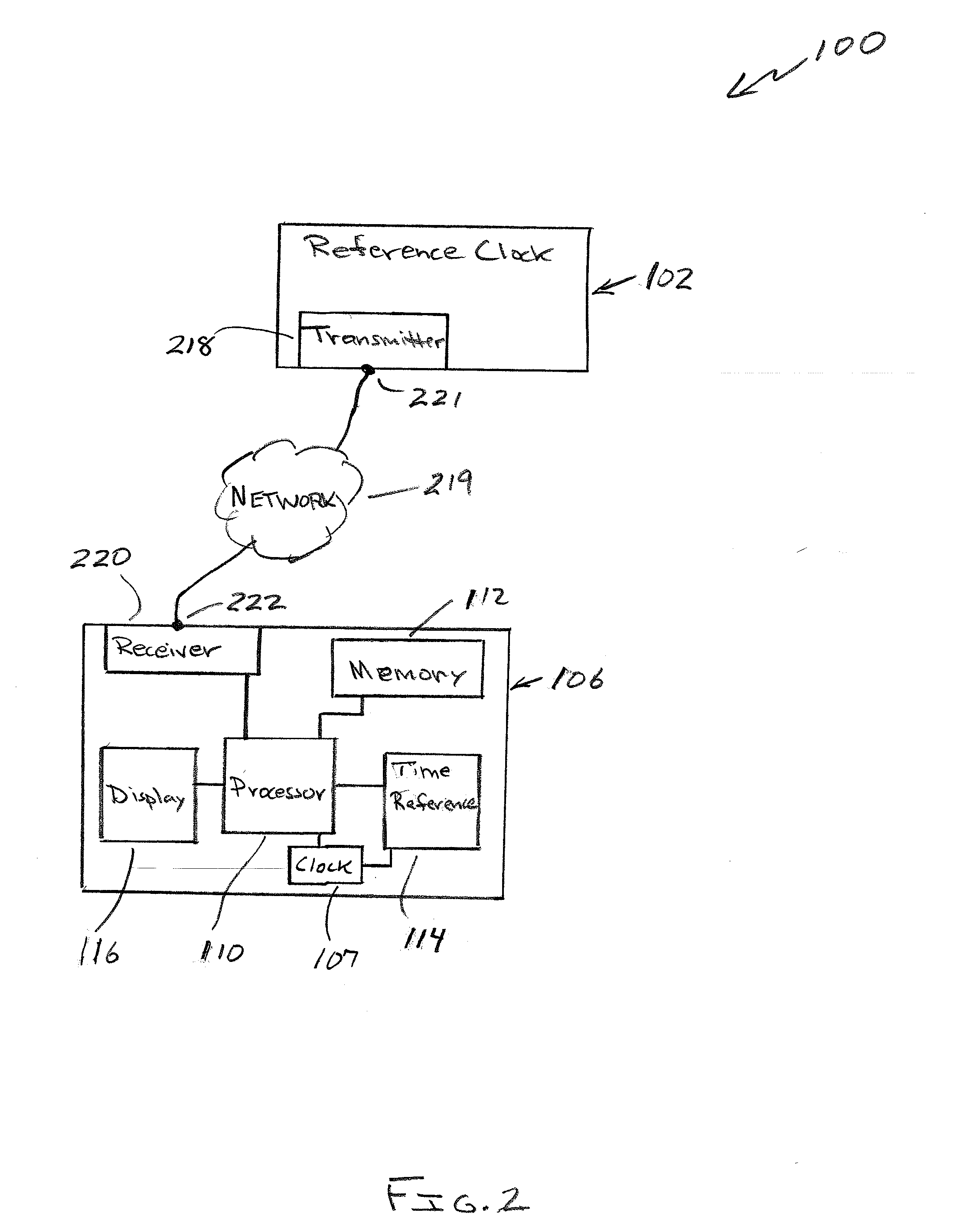Apparatus, system and method for keeping time
a technology of timekeeping and apparatus, applied in the field of keeping time, can solve the problems of frequency output, devices may provide a time that becomes increasingly less accurate, and often fails to receive signals from distribution devices, so as to eliminate the initial offset, eliminate the error, and increase the accuracy of a time
- Summary
- Abstract
- Description
- Claims
- Application Information
AI Technical Summary
Benefits of technology
Problems solved by technology
Method used
Image
Examples
Embodiment Construction
[0018]This invention is not limited in its application to the details of construction and the arrangement of components set forth in the following description or illustrated in the drawings. The invention is capable of other embodiments and of being practiced or of being carried out in various ways. Also, the phraseology and terminology used herein is for the purpose of description and should not be regarded as limiting. The use of “including,”“comprising,” or “having,”“containing”, “involving”, and variations thereof herein, is meant to encompass the items listed thereafter and equivalents thereof as well as additional items.
[0019]Referring to FIG. 1 in accordance with one embodiment, a system includes a reference clock 102, a transmitter 104 and a device 106 which is located remote from the reference clock. According to one embodiment, the reference clock is an atomic clock, that is, a clock that uses an atomic resonance frequency standard as its time keeping element. Further, acc...
PUM
 Login to View More
Login to View More Abstract
Description
Claims
Application Information
 Login to View More
Login to View More - R&D
- Intellectual Property
- Life Sciences
- Materials
- Tech Scout
- Unparalleled Data Quality
- Higher Quality Content
- 60% Fewer Hallucinations
Browse by: Latest US Patents, China's latest patents, Technical Efficacy Thesaurus, Application Domain, Technology Topic, Popular Technical Reports.
© 2025 PatSnap. All rights reserved.Legal|Privacy policy|Modern Slavery Act Transparency Statement|Sitemap|About US| Contact US: help@patsnap.com



